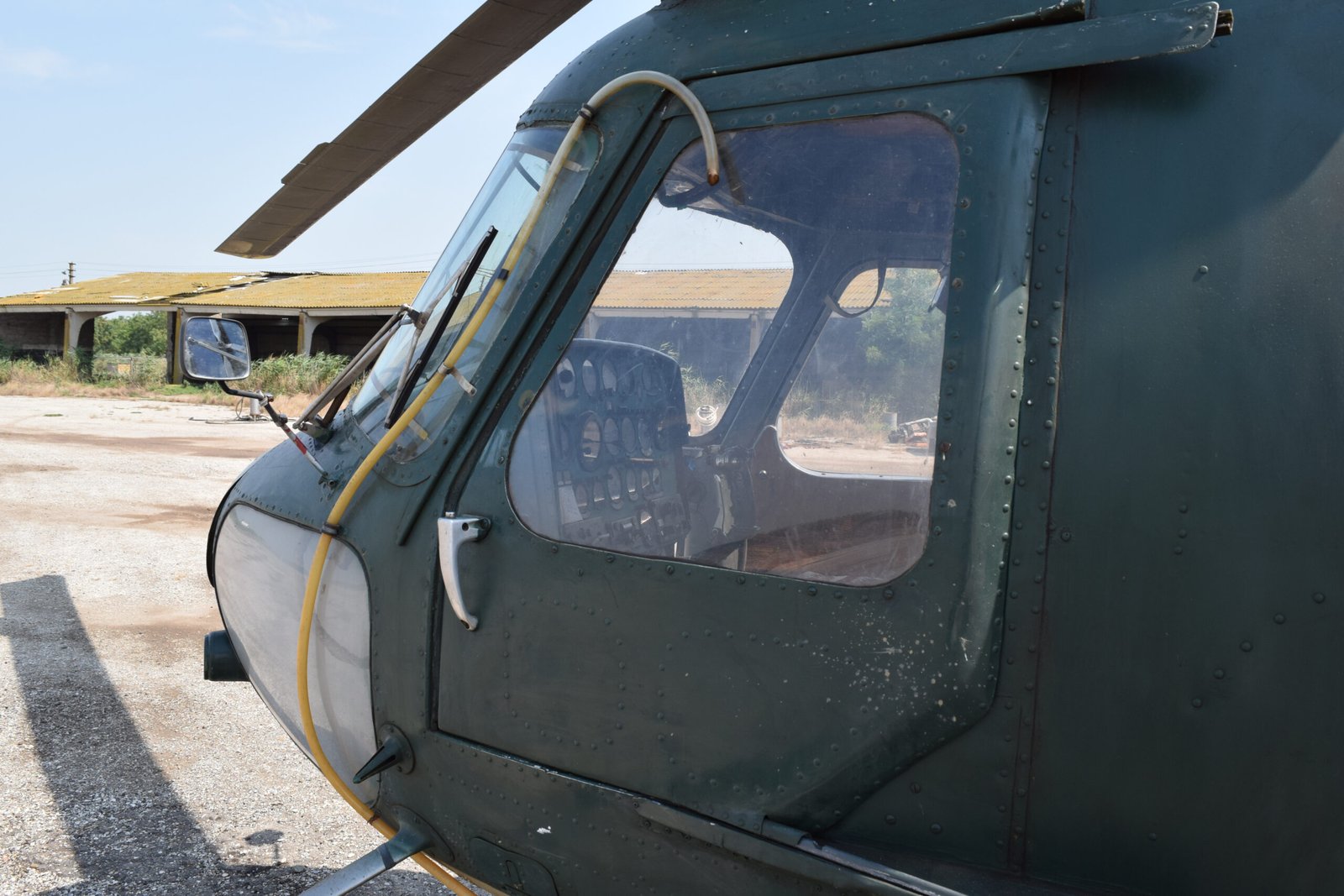FAA links
Flight Paths: How Aviation is Shaping Global Connectivity
In an era where the world feels smaller than ever, aviation plays a pivotal role in knitting together distant regions, cultures, and economies. The advancements in technology not only enhance safety and efficiency but also shape the future of global connectivity. As we soar through the skies, let’s explore how aviation technology training, online resources, and emerging trends like drones are revolutionizing this industry.

Aviation technology has come a long way since the days of wooden biplanes. Today’s pilots rely heavily on sophisticated simulators that replicate various flying conditions and scenarios. These state-of-the-art training tools allow aspiring aviators to hone their skills without leaving the ground. Simulators provide a risk-free environment for learning, enabling pilots to navigate thunderstorms or emergency situations while receiving real-time feedback from instructors. This shift towards virtual training is not just cost-effective; it enhances safety by ensuring that pilots are well-prepared before they take to the skies.
For those looking to delve deeper into aviation beyond traditional flight schools, a plethora of online courses and ground schools are available at your fingertips. Platforms such as Coursera and Udemy offer specialized courses covering everything from aerodynamics to air traffic control principles. The flexibility of these programs allows individuals to learn at their own pace while balancing other commitments—perfect for those aspiring to become certified pilots or aviation professionals.
In addition to formal education, staying informed about industry trends is crucial for anyone passionate about aviation. A wealth of blogs and websites can serve as invaluable resources for insights into current events, technological advancements, and career advice within the field. Some notable mentions include:
1. **AirlineGeeks.com** – Provides up-to-date news on airlines around the globe.
2. **ThePointsGuy.com** – Focuses on travel tips and maximizing loyalty points.
3. **FlyingMagazine.com** – Offers expert reviews on aircraft along with pilot stories.
4. **PPRune.org** – A popular forum among pilots where they share experiences and advice.
5. **AviationWeek.com** – Delivers in-depth analysis of aerospace developments.
Social media platforms also play a significant role in connecting aviation enthusiasts worldwide. Twitter accounts like @AeroNewsNet keep followers updated on breaking news, while Instagram profiles such as @PilotLife showcase stunning aerial photography alongside glimpses into a pilot’s daily life.

As we explore further into modern aviation landscapes, drones are proving transformative—opening new avenues for connectivity and commerce while raising questions about regulations and airspace management. Drones have found applications beyond mere recreational use; industries such as delivery services, agriculture, surveillance, and even emergency response have started integrating unmanned aerial vehicles (UAVs) into their operations.
For those intrigued by this burgeoning sector or considering a career in piloting drones commercially, it’s essential to understand FAA regulations governing drone usage. The Federal Aviation Administration provides comprehensive resources online that cover licensing requirements for remote pilots (Part 107 certification), safety guidelines for drone operation, and tips for navigating airspace restrictions.
So whether you’re an aspiring pilot eager for knowledge or simply a curious traveler keen to understand more about our interconnected world through aviation—there’s never been a better time to get involved in this dynamic field! With technology advancing rapidly alongside educational opportunities expanding infinitely—aeronautical dreams can be transformed into reality faster than ever before! Embrace your passion today; who knows where your flight path may lead?
The Evolution of Flight: From the Wright Brothers to Modern Air Travel
The story of aviation is a tale rich with innovation, determination, and dreams soaring through the clouds. It all began over a century ago when Orville and Wilbur Wright achieved what many deemed impossible: they took flight. Their pioneering spirit laid the foundation for modern air travel, setting off an evolution that has transformed the skies into bustling highways filled with commercial jets and unmanned drones alike.
Today, technology plays an integral role in aviation training. Gone are the days when aspiring pilots relied solely on books and flight instructors to learn their craft. Enter simulators—sophisticated virtual environments that mimic real-life flying conditions with astounding accuracy. These high-tech tools allow students to experience everything from routine maneuvers to emergency situations without leaving the ground. By honing their skills in a controlled setting, future aviators can build confidence and refine their techniques before taking to the sky.
For those eager to dive deeper into aviation knowledge, numerous resources abound online. A plethora of blogs and websites cater to aviation enthusiasts and professionals alike. Some notable mentions include:
1. **Airways Magazine** – A comprehensive source for news, reviews, and insights about airlines worldwide.
2. **FlightGlobal** – Offers detailed analyses of current trends in aviation technology.
3. **Pilot’s Discretion** – A blog dedicated to sharing pilot experiences and tips.
4. **AvGeekery** – Focused on celebrating all things related to airplanes and flying.
Social media platforms also serve as vibrant hubs for aviators seeking community engagement or industry updates. Twitter accounts like @AviationWeek provide instant news flashes, while Instagram showcases breathtaking aerial photography from both hobbyists and professionals.
Moreover, numerous online courses have emerged, enabling aspiring pilots or enthusiasts to obtain essential knowledge remotely. Ground schools are now accessible from anywhere in the world; institutions such as King Schools offer comprehensive programs covering everything from FAA regulations to advanced navigation techniques. Platforms like Coursera even host courses pertaining not just to piloting but also aircraft maintenance, air traffic control management, and aerospace engineering.
As interest in aviation continues growing, job opportunities in this field expand alongside it. While becoming a pilot remains one of the most sought-after career paths—requiring dedication and extensive training—other roles like air traffic controller or flight engineer also promise rewarding careers within this dynamic industry.
In recent years, another revolution has taken flight—the rise of drones! Once seen merely as toys or gadgets for hobbyists, drones have rapidly evolved into critical tools used across various sectors including agriculture, real estate, search-and-rescue operations, and delivery services. This advancement has prompted regulatory bodies such as the Federal Aviation Administration (FAA) to establish guidelines ensuring responsible drone usage while promoting safety standards.
Navigating these regulations can be daunting; however, valuable resources are available through official FAA links that clarify licensing requirements for drone operators alongside best practices for safe flying.
Modern air travel stands on the shoulders of giants—the Wright brothers’ legacy is evident today more than ever as we witness remarkable advancements in technology reshaping our skies daily. With innovative training methods paving pathways for new pilots while integrating drones into our lives seamlessly signifies only one thing: The sky isn’t just a limit; it’s an open invitation awaiting exploration!

Flight Paths: Exploring the Future of Sustainable Air Travel
As we soar into a future where sustainability takes precedence, the aviation industry is undergoing a radical transformation. From green technologies to innovative training methods, this evolution encompasses all facets of air travel. Let’s navigate through these exciting developments!
*Online Aviation Courses and Ground Schools**
In an age where digital education reigns supreme, aspiring pilots can now access a plethora of online aviation courses. These programs offer flexibility and convenience, allowing students to learn at their own pace. Renowned platforms like Coursera and Udemy have partnered with universities to provide comprehensive training that covers everything from aerodynamics to navigation systems.
Ground schools remain a crucial foundation for pilot training, offering hands-on experience in real-world scenarios. They blend theoretical knowledge with practical skills necessary for successfully navigating the skies. With advancements in technology, many ground schools are also integrating virtual reality (VR) elements into their curricula, providing immersive experiences that simulate flight conditions.
*Career Opportunities for Pilots**
The demand for skilled pilots has never been greater. Airlines are constantly seeking qualified individuals who can adapt to the rapidly evolving landscape of aviation. Job opportunities abound not only in commercial airlines but also in cargo transport, private charters, and even agricultural aviation. As sustainability becomes a key focus, positions related to eco-friendly practices within flight operations are on the rise.
Additionally, many organizations are collaborating with educational institutions to create mentorship programs designed to guide new pilots through their careers. This support system helps bridge the gap between learning and employment while fostering a culture of sustainability in air travel.
*The Rise of Drones**
Drones are revolutionizing various sectors beyond traditional piloting roles. Their applications range from delivering packages to monitoring environmental changes—an essential tool for promoting sustainable practices within industries such as agriculture and logistics. The Federal Aviation Administration (FAA) has introduced regulations that facilitate drone integration into our airspace while ensuring safety standards are met.

With more companies investing in drone technology, there will be an increasing need for professionals trained in this area. Online courses focusing specifically on drone operation and regulations are sprouting up everywhere, enabling enthusiasts and career-changers alike to gain valuable skills.
*Aviation Resources: Blogs, Websites & Social Media**
For those eager to stay ahead in the dynamic world of aviation, numerous blogs and websites provide invaluable insights:
1. **AirlineGeeks.com** – A hub for news and analysis from around the globe.
2. **FlyingMag.com** – A favorite among general aviation enthusiasts.
3. **AVweb.com** – Offers breaking news articles focused on flight safety.
4. **PilotWorkshops.com** – Provides unique skill-building resources tailored for pilots.
Social media platforms such as LinkedIn host groups dedicated to aviation discussions while Instagram accounts highlight stunning aerial photography from passionate aviators worldwide.
*Aviation Technology Training: Simulators**
One cannot overlook the impact of simulators on pilot training programs! Modern flight simulators replicate realistic flying environments without leaving solid ground behind—a cost-effective way to hone skills without risk or resource consumption associated with real flights.
These advanced systems allow trainees to practice emergency maneuvers or complicated navigation scenarios repetitively until mastery is achieved—essentially streamlining training processes while promoting safer flying practices overall.
As we look toward tomorrow’s horizon in aviation innovation—where sustainable solutions become commonplace—the journey promises excitement aplenty! Whether you’re considering becoming a pilot or simply intrigued by aerial advancements, staying informed is your ticket toward navigating this transformative era successfully!


